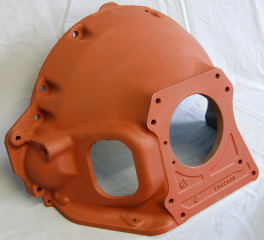I could use some info of you gurus out there.
I need to replace my bellhousing and need to know what I got and thus what I need.
I don't have the tools/skills/space to disassemble the tranny to see the casting nr. If I let the repair shop do it, it will cost me appr. 250 Euro...
So I tried to do it based on pictures and I'm pretty confident that it is a big block 11" bellhousing for a '69 B body, nr 2892626.
Some additional info about my 4 speed: PP833 2415 0201 which means an A833 4 speed manual built on March 8th 1968, nr 201 on that day.
This is my block when it was outside my car a couple of years ago during the big restoration:

And this is a picture I found on the
Brewer's Performance site:

In my opinion a perfect match.
So I could go for this reconditioned one.
But I saw this one (Keisler Big Block Bellhousing (A833 18-spline)) on the
Keisler site:

New, aluminium (lighter) and cheaper ($300 in stead of $400 for the reconditioned one)
What I would like to know is, if I'm right with my identification and if the Keisler one is a good option.
Perhaps the first question can be answered by AMXguy; in
this topic he mentions that he has this 2892626 bellhousing in 2 of his cars.